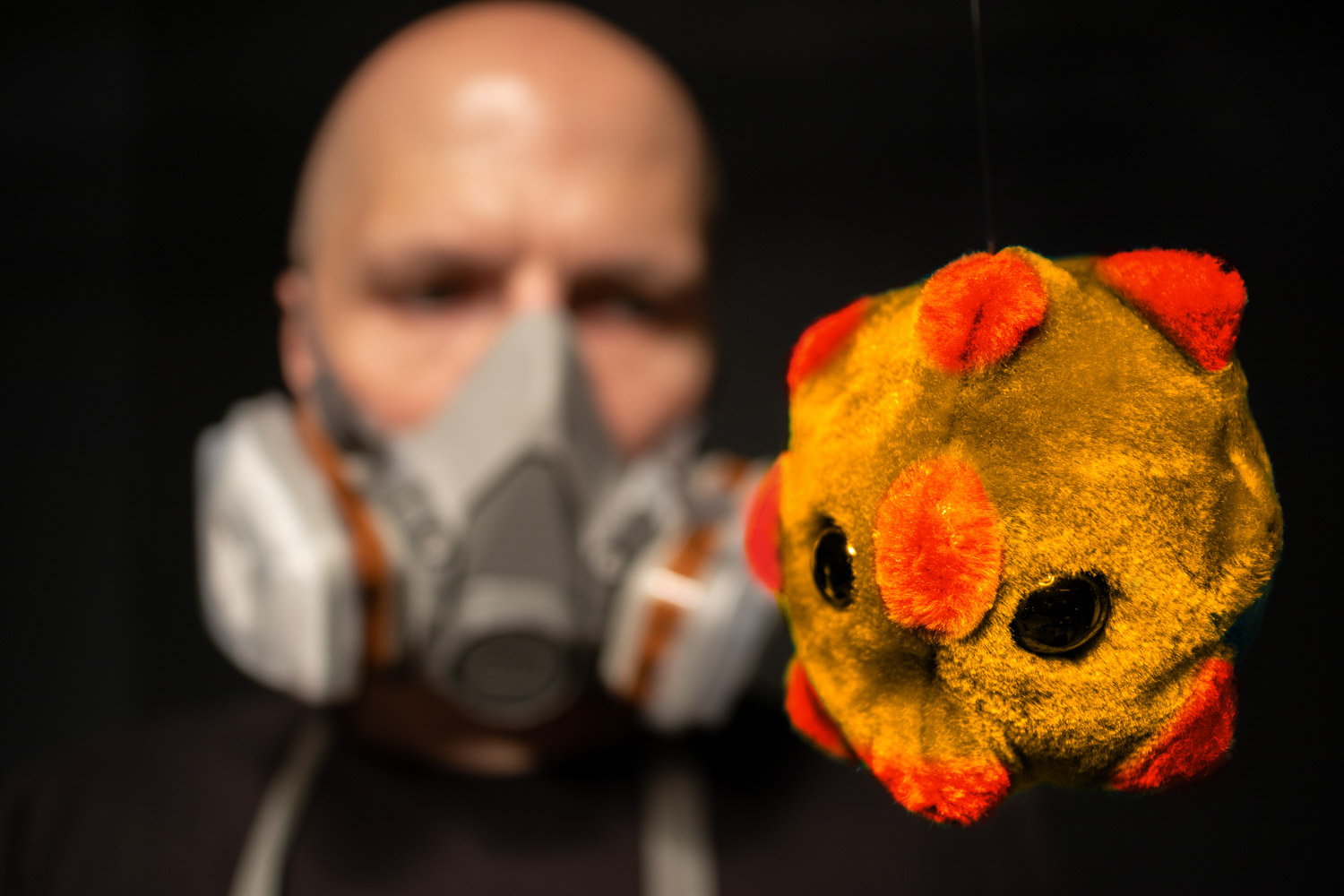“You know me, if something bothers my mind, I have to make art out of it. Sadly at this moment, it’s the virus — COVID-19 — so I put my thoughts and feelings onto seven wet plates to make a stop motion animation.”
Regular readers will no doubt be familiar with Markus Hofstaetter through my interview with him in early 2019 and the numerous articles featuring his photography and camera builds here on EMULSIVE. He’s not someone who creatively stays in one place for long, so when he contacted me a few days ago saying that he was going to release a video “about a tintype animation project”, I knew it would be something special and altogether unique.
Let’s start with the finished result:

Speaking to Markus about the shoot, he told me about his reason for using “COVID-19” as a subject:
“The concept of a virus – especially our problem right now with COVID-19, is reflected in the Collodion process. You have to take precautions for the sake of your own health and make sure you do not touch or inhale the chemistry and reduce/remove cross contamination. This small project speaks to that.”
Due to the nature of the wet plate process, it was not possible to pre-coat all of the plates needed for ahead of time and just expose them in quick succession. That restriction made for a little added madness during the shoot, requiring Markus to coat a single plate coat a plate, load it into his camera, be directed (then photographed) by his friend Erich and then run off to develop it before starting the process for the next frame and the next, and the next. Seven times.


That sadly also meant a lot of wasted gloves, the black material would not have translated well to the wet plate medium. Speaking of colour response, that’s also the reason behind the choice of a blue “model” to stand in for the coronavirus.
The collodion process is orthochromatic (sensitive to blue light and not sensitive to red). This makes the blue plus brighter in the final image, where a red one would have appeared black. It’s also one of the reasons why so many tintypes feature (blue-eyed) subjects with incredibly bright eyes.

“We had to figure out how to fix my hands to the same spot and how to move the plush virus toy from one point to the next. To hang it, we used a boom stand, which we moved slightly for each frame. To keep my hands in the same spot, we strung some nylon string from the chair up to my studio ceiling to act as a guide.”
Markus’ making of video is embedded below and well worth a watch. Here’s a still from it which shows the nylon guides Markus mentioned (and of course, the “virus” itself.)

“I rebuilt my studio in 2017 just before an interview with ORF (an Austrian national public service broadcaster) about my work. I had to do it, because it was a mess. We did not have much time, so I was very happy that I had help from friends to finish that. Because my studio lacks the necessary height, I had to figure something out. Normally you’d have background paper on a roll fixed to the ceiling – but this would take to much space for my shoots.”
“When I rebuilt the studio I glued and screwed metal sheeting into the ceiling and walls and painted them. This makes it easy to mount almost anything with magnets and now I can mount paper easily with magnets and without having a paper roll in my image.”
“It was Erich’s Idea to wrap the nylon strings around the chair so I could have them as a fixed point for my hands. With the metal sheets in the ceiling and some magnets, it was an easy and very effective solution.”
“I showed this little animation a friend and he told me, that this could be the most expensive way to making a movie…!”
Here’s the behind the scenes video:
The project took around four hours to complete from preparing the plates to giving them their final varnish after exposure and fixing.
At only seven frames long, it’s probably not the most efficient way of creating moving pictures but time well spent nonetheless and an innovative use of the medium, in my opinion.
~ EM
Share your knowledge, story or project
The transfer of knowledge across the film photography community is the heart of EMULSIVE. You can add your support by contributing your thoughts, work, experiences and ideas to inspire the hundreds of thousands of people who read these pages each month. Check out the submission guide here.
If you like what you’re reading you can also help this passion project by heading over to the EMULSIVE Patreon page and contributing as little as a dollar a month. There’s also print and apparel over at Society 6, currently showcasing over two dozen t-shirt designs and over a dozen unique photographs available for purchase.








One response to “Making “VIRUS”: A tintype stop motion animation”
I love the video and the story behind it. What I like most is the cool body moves which are great with the music. It’s like a surreal dance where the hands are mostly kept still and only body and head move. Super!